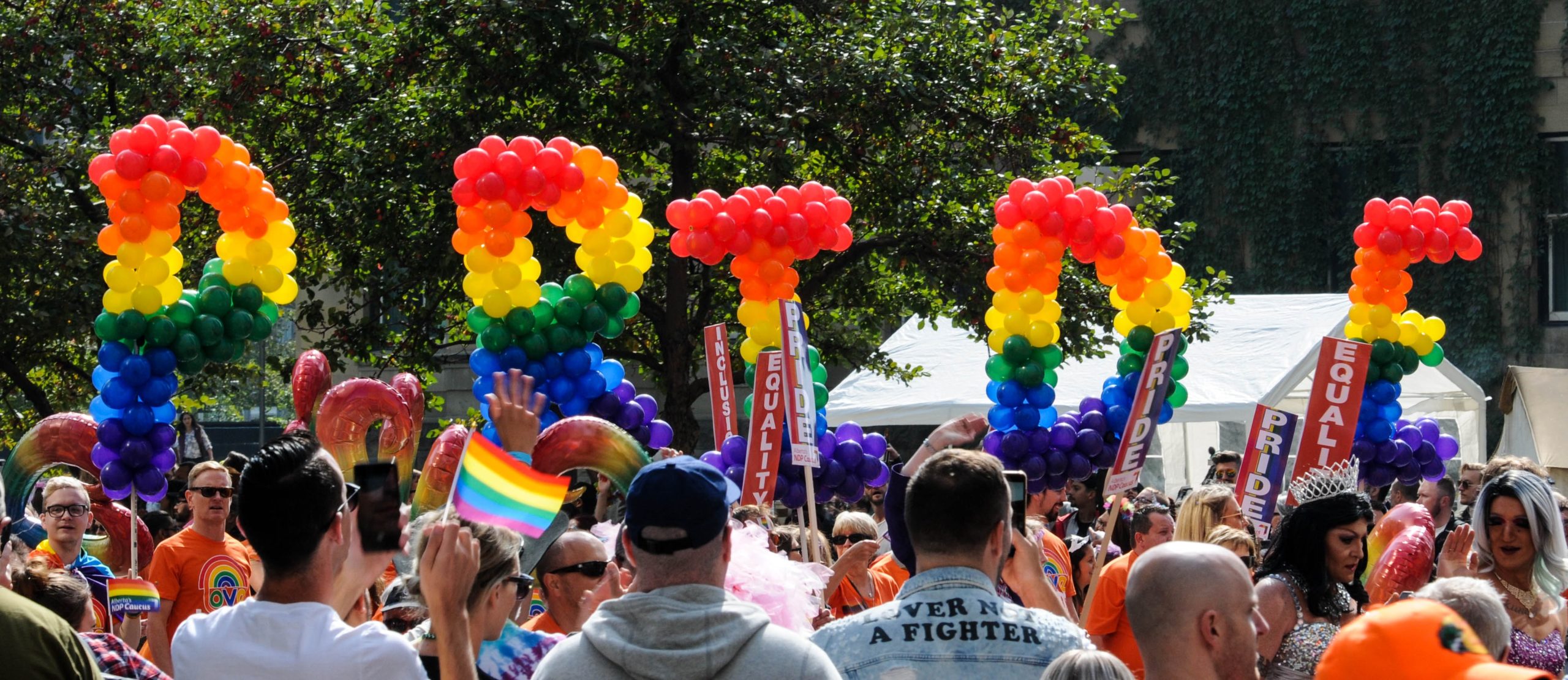What This Evangelical Mom Learned at her First Pride
I attended my first Pride festival in 2019, and no one was more surprised by that fact than me. An event that openly celebrated LGBTQ expression in all its colorful diversity is not exactly where you’d expect to find your average white evangelical Christian mom, but there I was, surprisingly comfortable amid the rainbows and glitter.
I’ll be honest, I used to think “gay pride” was an oxymoron. How could someone be “proud” of their “sin”— as my evangelical upbringing defined being gay? But life sometimes has a way of upending our preconceived ideas, and several years ago, when our sixteen-year-old daughter came out to us as gay, I felt my tidy Christian worldview begin to unravel. In a Jesus-loving, evangelical-church-going family, this just didn’t seem possible.
Suddenly, I was forced to examine my deeply rooted biases, fears, and long held stereotypes in the light of this very dear and precious relationship.
Coming of age in early-80s conservative evangelical circles, I didn’t have any gay friends until I was almost in my thirties. My limited understanding of gay culture was formed mostly by what I saw on TV sitcoms and footage of big-city Pride parades. Those images had absolutely no connection to my reality. No one in my church or friend groups talked openly about gay people. It was all taboo and hush-hush. You heard whispers about people who had left the church to go live “the lifestyle” but I don’t remember anyone explaining what that was, exactly. It made for a lot of speculation, jokes and titillating gossip—none of it based in reality. But the notion of a nefarious gay community, lifestyle, or culture persisted in my imagination into adulthood.
So when my newly-out daughter started spending more time with her LGBTQ friends and less time at church, my instinct was to try and protect her from the dangers I feared would be awaiting her. What those “dangers” were, I wasn’t all that clear on—but fear of the unknown fueled my worry. I didn’t want Abby to be pulled into relationships and experiences she wasn’t emotionally prepared to navigate. She was young in ways that seemed tender and impressionable—a ripe catch for someone who might influence her negatively and pull her away from the values she’d grown up with.
Ultimately, I hated the thought of a chasm growing between my daughter and me. If I let myself believe that in coming out, she had become something other than the daughter I’d always known and loved, that she had left us and become one of them, I knew I’d lose her. I couldn’t bear the thought of it. I needed to make room for a new way of thinking, one that allowed Abby to be who she was, without the constant nagging dread I’d been carrying since she first came out.
A crucial part of making room for new thinking involved getting down to the tangled roots of what I’d grown up believing about homosexuality and the Bible. Starting with the notorious clobber verses, I dove deep into the linguistic, cultural and historical contexts of these passages, discovering nuances, discrepancies, and all manner of differing opinions about a topic I’d been taught the Bible was “clear” about.
I turned to the gospels with new eyes and saw a Jesus who embraced the outcast, wept with the hurting, and sent away the accusers. Rather than blaming, judging, or condemning acts that the religious leaders had a cut-and-dried answer for, he kept pointing to the higher law of love.
Love was the thread woven throughout the Old Testament in the story of God’s pursuit of Israel. Love was the force behind the spreading of the good news to all people, regardless of religion, ethnicity, and gender throughout the New Testament. Jesus said the whole law, all of the commandments, could be summed up in two: love God and love one another. The truth I encountered in Scripture didn’t contradict my hope in a loving Creator-God who wanted to be in relationship with my daughter and others like her—it confirmed it.
As my theology was expanding, so was my lived experience. Learning to be at ease with Abby’s growing new community of LGBTQ friends was going to take baby steps, and as usual, those steps were at first awkward and uncomfortable. But time after time, what I encountered were young people thinking and talking about the same things as others their age: finding their career path, figuring out relationships, navigating adulthood.
Over time, the distinctions between “us” and “them” I once thought clearly defined became blurry.
It’s hard to imagine I was once worried about Abby spending time with these people I’ve sat across tables from, laughed with, cried with, and made room for in my heart. My life is bigger and more beautiful because they are in it.
I wasn’t sure what to expect at my first Pride event, and I’ll confess, this suburban mom’s jaw dropped a little at the gold lamé speedos and creatively placed body stickers. Mostly, though, I found it to be a place where everyone seemed to belong, feel safe and celebrated. When I consider that, at some point in their lives, most LGBTQ people have had to hide or pretend to be something other than who they are in order to feel safe or accepted—I understand the need to declare with joy and solidarity: This is us!
What would Jesus do, I wonder, if he were at a Pride event, walking among the colorful tattoos, outlandish hairdos, rainbows, and piercings? Make a few friends, I figure.
Staci Frenes is a Christian music artist, speaker, author and mom of an LGBTQ daughter. Her book, “Love Makes Room: And Other Things I Learned When My Daughter Came Out” (Broadleaf Books) is available now wherever books are sold.

